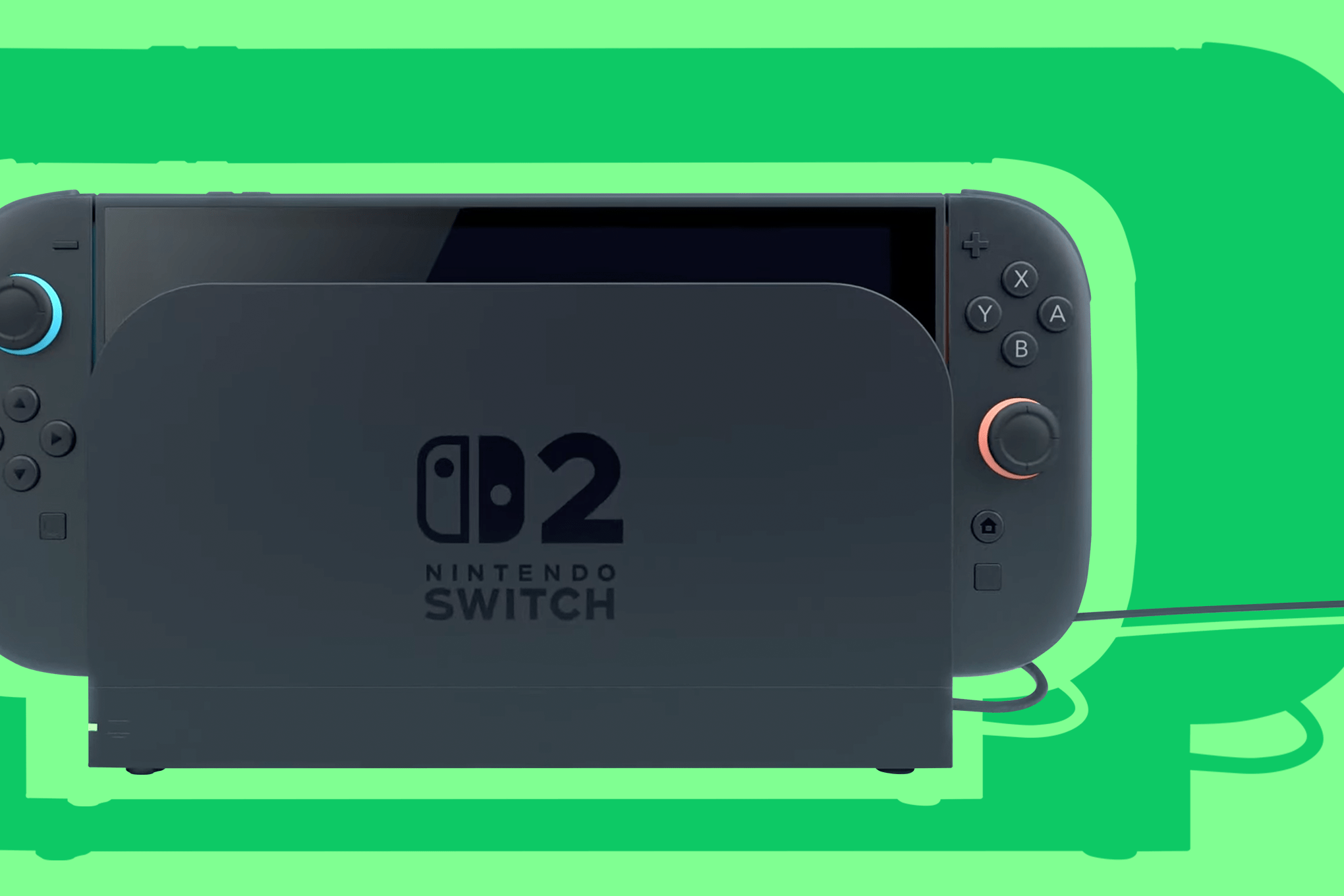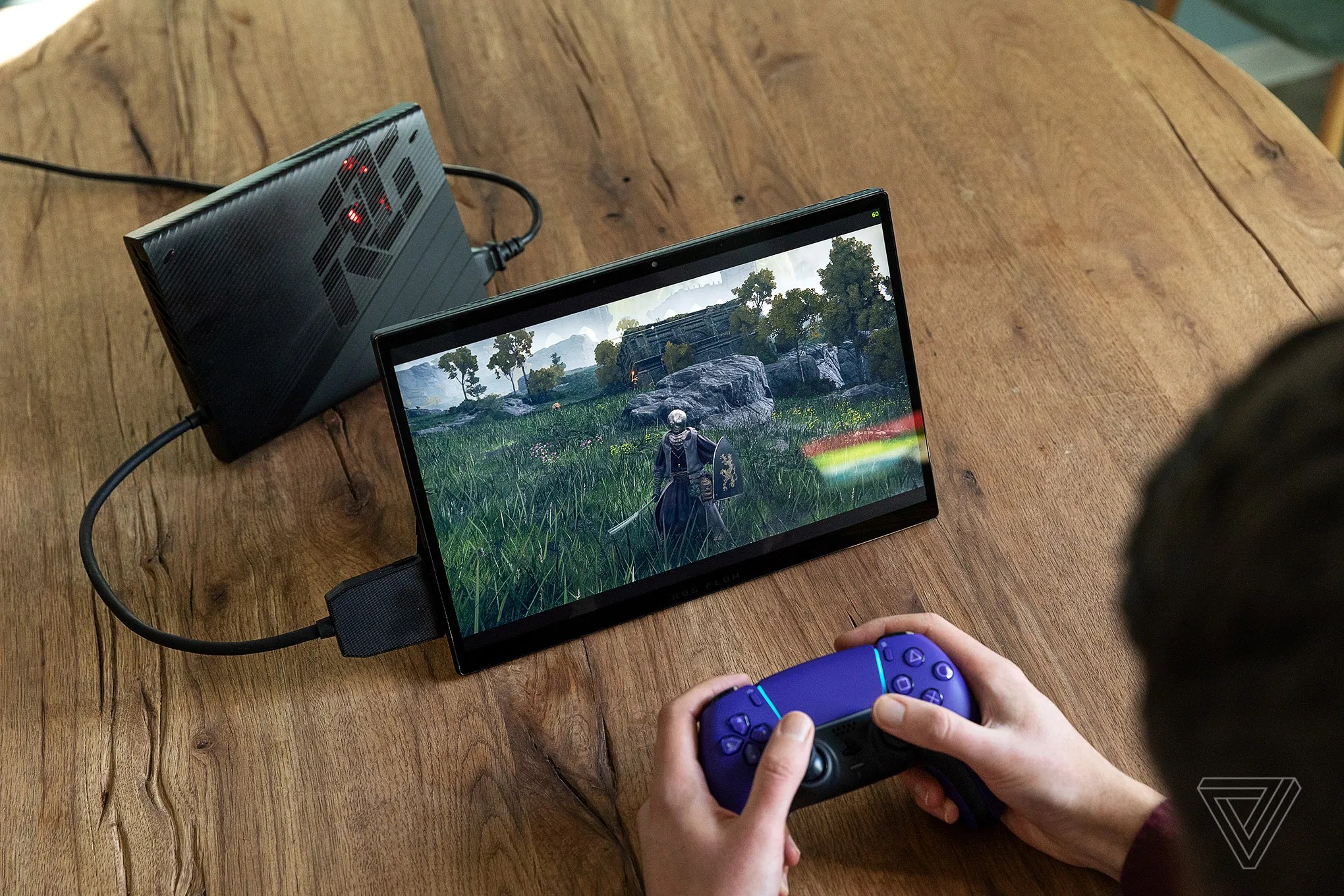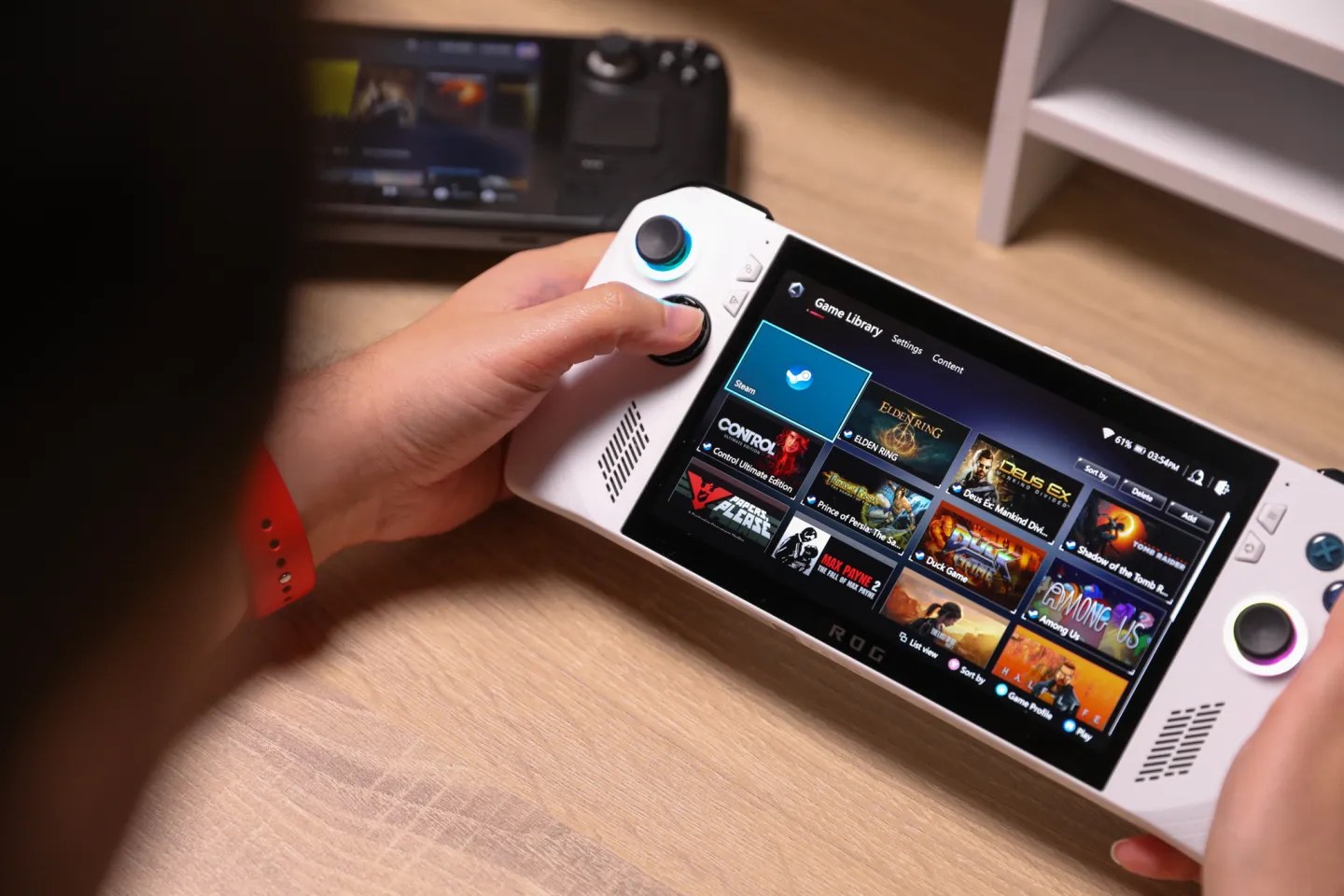The Nintendo Switch 2 has entered the ring, possibly complicating your decision of which handheld to buy this year. While Nintendo’s new console, which comes out on June 5th, may seem similar to handheld gaming PCs like the Steam Deck and Asus ROG Ally, there’s a lot that sets them apart. Everything like how you buy and play games, their control methods, how powerful they are, and how you can expand their storage makes them different. Unique doesn’t always mean “good,” by the way.
While tech-savvy folks likely understand the key differences between each of the major handhelds, possibly enough to establish a preference, some could use a hand breaking things down. That’s exactly what I’m going to do here, specifically comparing the Switch 2 to the Asus ROG Ally and the Ally X, two of the most popular handheld gaming PCs that aren’t a Steam Deck (in small part because they’re easy to buy at Best Buy). I’ve already compared the Switch 2 to Valve’s console, so my focus here is exclusively on Asus’ consoles that have a dedicated fanbase and some great specs.
As mentioned, the Switch 2 will launch on June 5th. Preorders were initially set to begin on April 9th, but were pushed due to the Trump administration’s global tariffs. While that situation remains in flux, it’s possible that preorders will have begun (or will soon), depending on when you read this. Assuming no changes from tariffs, the Switch 2 will be available in two pricing configurations, each with 256GB of internal storage; the $449.99 base console and a $499.99 bundle that also includes Mario Kart World.
The Asus ROG Ally is available in multiple configurations, most of which are discounted regularly (sometimes steeply, but for the purposes of this post, I’m going to share original retail prices). It starts at $499.99 and features the AMD Ryzen Z1 processor, 16GB of RAM, and 512GB of storage, while electing for the more powerful version with the Z1 Extreme APU (and no other spec improvements) bumps the price up to $649.99.
Image: Vjeran Pavic / The Verge
The ROG Ally X has so many improvements that it might as well be the ROG Ally 2 — and you’ll pay a premium for them. We’ll go into more detail below, but pricing starts at $799.99 for the Z1 Extreme model with 24GB of RAM, 1TB of storage, and a bigger battery. Doubling the storage to 2TB adds $100, totaling $899.99.
The Switch 2 and all Asus ROG Ally models (even the Ally X) have some specs in common. They each have 1080p LCD touchscreens with a 120Hz refresh rate. However, Nintendo’s handheld has a larger screen (7.9 inches to 7 inches, respectively). The Switch 2’s screen goes toe-to-toe with the Ally X with variable refresh rate (VRR), which is a great feature to have — and quite the shock to have it in the sub-$500 Switch 2 — as it prevents the screen from displaying choppiness as the frame rate fluctuates. While the Ally and Ally X feature AMD’s FreeSync Premium, the Switch 2 has a G-Sync display and HDR.
Nintendo hasn’t shared the peak brightness for the Switch 2’s screen yet, but the ROG Ally models go up to 500 nits.
Performance and battery life
The ROG Ally — and especially the ROG Ally X — offer some of the best performance of any handheld gaming PCs on the market. While one might think its Z1 Extreme processor is getting long in the tooth, it debuted in 2023, it’s faster than the Steam Deck, and more capable than the Z2 Go that failed to impress us in its 2025 debut device, the Lenovo Legion Go S.
You’ll get the best performance in the pricey ROG Ally X (let The Verge’s Sean Hollister show you some game-by-game frames per second breakdowns in his review), thanks to its faster memory and more efficient cooling compared to the standard ROG Ally. But even the more affordable models offer a more-than-acceptable baseline, running many popular games at over 60 frames per second at 720p, and in some cases, at 1080p. Several titles can run above 100 frames per second.
The ROG Ally runs at higher power levels than the Steam Deck, yet it’s unclear whether that’s the case for the Nintendo Switch 2 as well. Nintendo is promising up to 120 frames per second with some Switch 2-exclusive titles that offer performance modes, but we’ll have to wait and see what kinds of visual compromises were made to achieve such a rare feat for a handheld.
The Switch 2 differs drastically from the ROG Ally models because of its custom Nvidia processor. While exact spec details about this Nvidia processor are slim, Nvidia has confirmed that the Switch 2 supports DLSS (Nvidia’s graphics upscaling tech), which will likely be leaned on to achieve fast frame rates in games at 1080p resolution in handheld mode and at up to 4K while the console is docked. We’re curious how DLSS looks in a low-powered device (the also-Nvidia-powered Switch from 2017 predated DLSS’ existence). For comparison, the ROG Ally supports AMD’s comparable FSR upscaling tech, though the integration sometimes results in a fuzzy-looking image.

In terms of battery life, Sean Hollister was left wanting more out of the ROG Ally consoles. While its 40Wh capacity matches the Steam Deck, it spends its battery reserve faster, even in low power modes. Hollister said in his ROG Ally review that four hours of battery life was the best case scenario compared to the Steam Deck’s seven. A lot was improved on in the ROG Ally X, beyond its impressively large 80Wh internal battery. Hollister reports that the Ally X is less power-hungry than the original, letting you game for longer.
Nintendo is currently being cagey about battery specs in the Switch 2, only sharing that it contains a 5,220mAh lithium-ion battery. It advertises battery life ranging from two to six and a half hours, depending on the game.
It’s a little strange to talk about joysticks in the performance section, but the ROG Ally models feature Hall effect joysticks, while the Switch 2 does not. Those operate with magnetized mechanisms instead of potentiometers, allowing the sticks to not wear down over time, leading to worsening performance and inaccurate inputs. Given the controversy surrounding Nintendo’s Joy-Con drift, we’re surprised and disappointed that Nintendo opted not to go with Hall-effect sticks.
Both the Switch 2 and ROG Ally models use fast internal storage, albeit different types. The Switch 2 features 256GB of UFS storage (non-upgradeable), and can be expanded with microSD Express cards, which are classified as PCIe 3.0 NVMe SSDs but have the same microSD card form factor many of us are accustomed to.
The standard ROG Ally includes an M.2-2230 SSD (user-replaceable), but you’ll need to open it up to replace it. This maneuver won’t void your warranty, but it’s not as simple as you might hope. For something simpler, the ROG Ally supports microSD cards, including UHS-II versions with faster read and write speeds. The latter can be expensive and tough to find in stock, so I recommend going the SSD upgrade route if you really want more storage.

Image: Cath Virginia / The Verge
One of the many improvements in the ROG Ally X is the support for M.2-2280 SSDs, full-size M.2 SSDs that aren’t shrunk down to fit into tiny gadgets. Those SSDs are much easier to find in large storage capacities (and are often discounted), so it’s a bonus that the ROG Ally X supports them as well as microSD cards.
Moving on to docking, the Switch 2 and the ROG Ally were both designed as hybrid consoles that can be enjoyed as a handheld, or by linking up to an external screen. Docking is more core to the Switch 2 experience, just as it was with the original Switch, since Nintendo includes a TV dock with the console. With it, you can game at up to 4K resolution, capped at 60 frames per second over HDMI. The dock is low-frills, containing an Ethernet port, a USB-C power plug, an HDMI port, and two USB-A 2.0 ports.
None of the ROG Ally consoles include a dock (only a 65W USB-C power adapter), though Asus makes one that’s similar in execution to the Genki Covert Dock. It’s a 65W power brick with an HDMI 2.0 port to connect to a display, and one USB-A 2.0 port for connecting an accessory. It costs $64.99 through Best Buy, but you’re better off getting something cheaper on Amazon from JSAUX or Anker, both of which make docks that rival the official Steam Deck docking station in terms of ports.

Of course, if you’re rolling in it, feel free to buy the ROG XG Mobile external GPU that doubles as a docking station. It plugs into the ROG Ally’s proprietary port on the top, and it’s the cost of a high-end gaming laptop. I don’t recommend it because it’s super expensive, and yet, you’ll be bottlenecked by the speed of the ROG Ally’s Ryzen Z1 APU. The ROG Ally X dropped support for the XG Mobile.
The Switch 2 and ROG Ally have some games in common. Many games coming to the Switch 2 in 2025 are already out on PC, including Cyberpunk 2077, Split Fiction, Final Fantasy VII Remake Intergrade, and more (and are sometimes discounted, no less). But how you buy games on them is different, and that comes down to the software. While the Switch 2 is limited to titles on the eShop, the ROG Ally runs Windows 11. As such, you’re free to install any game platform available on that OS. That includes Steam, the Epic Games Store, Ubisoft Connect, and others. Games are more affordable on PCs (the ROG Ally is a PC, despite its handheld form factor).
While the ability to run any game from any platform is one of Windows’ biggest advantages against the Switch 2 (and compared to the Steam Deck, as well), there are downsides. Namely, Windows 11 isn’t a great experience for handhelds, as the OS doesn’t adapt well to the built-in controls and touchscreen. On the other hand, connecting a mouse and keyboard? That’s another story. The Asus ROG Ally will be among the first handhelds not made by Valve to be supported by official SteamOS in an update coming soon.
The Switch 2 has a special mouse mode, for which developers are creating control schemes. Games that support it will allow you to play with standard controls, then seamlessly switch to mouse-based controls when the player turns the Joy-Con 2 so that its sensor faces a hard surface. It’s intriguing, but ROG Ally players aren’t missing out on much because they can connect a wireless mouse to play their favorite games.
Specification |
Nintendo Switch 2 |
Asus ROG Ally X |
Asus ROG Ally |
Steam Deck LCD |
|---|---|---|---|---|
| Processor | Custom Nvidia chipset (details TBD) | AMD Ryzen Z1 Extreme | AMD Ryzen Z1 Extreme | Custom AMD APU |
| Screen type | 7.9-inch LCD | 7-inch LCD | 7-inch LCD | 7-inch LCD |
| Resolution (handheld) | 1,920 x 1080, up to 120Hz, VRR, HDR | 1,920 x 1,080, up to 120Hz, VRR | 1,920 x 1,080, up to 120Hz | 1,280 x 800, up to 60Hz |
| Resolution (docked) | 3,840 x 2,160 at 60Hz, or 1440p/1080p at up to 120Hz | 3,840 x 2,160 at 60Hz | 3,840 x 2,160 at 60Hz | 3,840 x 2,160 at 60Hz, or 1440p at 120Hz |
| HDR10 support? | Yes | No | No | No |
| Internal storage | 256GB (UFS, non-upgradable) | 1TB or 2TB (PCIe 4 M2-2280, user-replaceable) | 512GB (PCIe 4 M2-2230, user-replaceable) | 256GB (M2-2230, user-replaceable) |
| Expandable storage | microSD Express (up to 2TB) | microSD UHS-II | microSD UHS-II | microSD (up to 2TB) |
| Sensors | Accelerometer / gyroscope, mouse / ambient light sensor (in console) | Fingerprint / gyroscope / ambient light sensor | Fingerprint / gyroscope / ambient light sensor | Accelerometer / gyroscope / ambient light sensor |
| Ports (handheld) | 2x USB-C / 3.5mm | 2x USB-C / 3.5mm | 1x USB-C / 3.5mm / XG Mobile port | USB-C / 3.5mm |
| Ports (dock) | 2x USB-C / HDMI / ethernet | USB 2.0 / USB-C (power adapter) / HDMI 2.0 (dock not included) | USB 2.0 / USB-C (power adapter) / HDMI 2.0 (dock not included) | 3x USB-A 3.1 / USB-C (power adapter) / HDMI 2.0 / DisplayPort 1.4 / Ethernet (dock not included) |
| Wireless connectivity | Wi-Fi 6 / Bluetooth / NFC | Wi-Fi 6E / Bluetooth 5.2 | Wi-Fi 6E / Bluetooth 5.2 | Dual-band Wi-Fi / Bluetooth 5 |
| Wired connectivity | Ethernet (docked mode) | Ethernet via optional dock | Ethernet via optional dock | Ethernet via optional dock |
| Built-in mic? | Yes | Yes | Yes | Yes |
| Speakers | Stereo speakers | Stereo speakers | Stereo speakers | Stereo speakers |
| Battery capacity | 5,220mAh lithium-ion | 80Wh battery | 40Wh battery | 40Wh battery |
| Battery life (est.) | 2 to 6.5 hours | 2 to 10 hours | 2 to 4 hours | 2 to 8 hours |
| Charging time | About 3 hours 30 minutes | Not advertised | Not advertised | Not advertised |
| Game card slot | Switch 2 and Switch cartridges | N/A, uses microSD card (plus internal SSD) | N/A, uses microSD card (plus internal SSD) | N/A, uses microSD card (plus internal SSD) |
| Weight (grams) | 399.16g (or 535.24g with Joy-Con 2 controllers attached) | 678 grams | 608 grams | 669 grams |
| Dimensions | 4.5 x 10.7 x .55 inches | 4.37 x 11.02 x 0.97-1.45 inches | 4.37 x 11.02 x 0.83-1.28 inches | 4.6 x 11.7 x 1.92 inches |
| Starting price | $449.99 | $799.99 | $499.99 | $399.99 |
| Available | June 5th, 2025 | Now | Now | Now |
